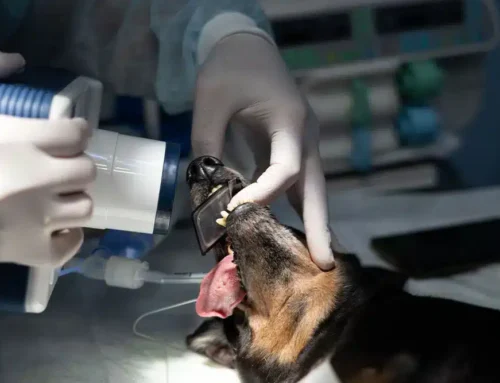Limping is one of the most common—and often most alarming—reasons pet owners seek veterinary care. Whether your dog or cat is suddenly favoring a leg or struggling with chronic stiffness, limping can be a sign of anything from a minor sprain to a serious orthopedic condition.
At Peak Pet Urgent Care, we specialize in identifying the underlying cause of lameness and providing fast, effective treatment tailored to your pet’s needs.
This guide will walk you through:
- Common causes of limping
- Diagnostic approaches
- Treatment options
- Signs you should never ignore
What Causes Limping in Pets?
Limping, or lameness, is defined as an abnormal gait resulting from pain, weakness, or mechanical dysfunction in one or more limbs. The severity, duration, and associated symptoms can help narrow down the cause.
1. Soft Tissue Injuries (Sprains, Strains, Muscle Tears)
Active pets often injure muscles, tendons, or ligaments while running, jumping, or playing. These injuries usually cause sudden limping, localized pain, and mild to moderate swelling.
- Mild strains may resolve with rest and anti-inflammatories.
- Severe tears may require immobilization or surgery.
Read more – TPLO Info
Muscle Tears in Dogs – WagWalking
2. Arthritis & Degenerative Joint Disease (DJD)
A leading cause of chronic limping in senior pets. Arthritis results from wear and tear on joints, leading to inflammation, stiffness, and pain—especially after rest or cold weather.
Treatment may include:
- NSAIDs and pain relievers
- Joint supplements (glucosamine, omega-3s)
- Laser therapy, acupuncture, or rehab therapy
- Weight management and low-impact exercise
AAHA Mobility Matters Guide
Arthritis in Cats – iCatCare
3. Cranial Cruciate Ligament (CCL) Tear
Similar to an ACL tear in humans, this injury affects the knee and is most common in large, active dogs. Symptoms include sudden hindlimb lameness, knee swelling, and difficulty bearing weight.
Treatment Options:
- TPLO or lateral suture surgery for stabilization
- Physical therapy post-op
- Conservative management (in mild or early-stage cases)
Canine Cruciate Ligament Injury – CSU
4. Hip Dysplasia
A developmental disorder where the hip joint doesn’t form properly, leading to instability, arthritis, and chronic pain. Most often affects large-breed dogs.
Management strategies:
- Pain relief and anti-inflammatories
- Joint supplements and physical therapy
- Surgical options: total hip replacement or femoral head ostectomy (FHO)
Hip Dysplasia Overview – Today’s Veterinary Practice
5. Patellar Luxation (Dislocating Kneecap)
A common cause of intermittent limping in small-breed dogs. The kneecap slips out of place, causing your pet to “skip” or hop while walking.
Treatment includes:
- Surgical realignment for moderate to severe cases
- Physical therapy for mild cases
- Weight control to reduce joint stress
Patellar Luxation in Dogs – Cornell Vet
6. Fractures and Trauma
Fractures, dislocations, and severe contusions are typically caused by falls, car accidents, or rough play. Signs include sudden, non-weight-bearing lameness, swelling, and visible deformity.
Emergency treatment may involve:
- Splinting or casting
- Surgical stabilization (plates, screws, or pins)
- Pain management and restricted activity
Broken Bones in Dogs – Zoetis Petcare
7. Paw & Nail Injuries
Even minor paw issues can lead to significant limping. Common culprits include:
- Cracked or torn nails and paw pads
- Foxtails, thorns, or burrs embedded in pads
- Burns from hot pavement or ice
- Bite wounds
- Insect stings or inflammation due to allergies
Cracked Nails – Kinship
Foxtails and Their Dangers – UC Davis
Bite Wounds in Dogs – AKC
8. Panosteitis (“Growing Pains”)
An inflammatory condition of the long bones seen in large-breed puppies (typically 5–18 months old). Lameness often shifts between legs and resolves with time.
Treatment:
- Pain management (NSAIDs)
- Rest and reduced exercise
- Monitoring for secondary orthopedic issues
Panosteitis – Embrace Pet Insurance
9. Immune-Mediated Joint Disease (IMJD)
Conditions like polyarthritis and rheumatoid arthritis can cause systemic inflammation of multiple joints.
Symptoms include:
- Limping that shifts from leg to leg
- Joint swelling and warmth
- Fever and lethargy
Treatment:
- Immunosuppressive medications (e.g., prednisone)
- Antibiotics if infection is suspected
- Joint supplements and pain relief
Canine Polyarthropathy – MSPCA
Rheumatoid Arthritis in Pets – WagWalking
How Veterinarians Diagnose Limping
1. Physical Examination
Your vet will observe your pet’s gait and posture, palpate limbs, and assess for pain, range of motion, swelling, or joint instability.
2. Diagnostic Imaging
Imaging helps confirm suspicions and rule out fractures or hidden issues.
- X-rays: Best for bones and joint structure
Small Animal X-rays – UC Davis
- Ultrasound: Useful for soft tissues and fluid evaluation
Small Animal Ultrasound – UC Davis
- CT Scan: More detailed than X-rays, ideal for complex injuries
CT Scans in Dogs – Dog Cancer
- MRI: Gold standard for evaluating neurologic causes of lameness
Guide to Small Animal MRI – Hallmarq
When Should You Seek Urgent Veterinary Care?
Some limps can wait a day or two. Others require immediate attention.
See a Vet ASAP If:
- Limping is non-weight bearing
- There is obvious swelling or deformity
- Your pet is whining, shaking, or panting from pain
- Lameness persists for more than 24–48 hours
- There is bleeding, heat, or discharge from a wound
Recognize signs of pain – AAHA
Treatment Options for Limping in Pets
Treatment varies widely based on the diagnosis, but may include:
1. Medical Management
- NSAIDs (carprofen, meloxicam)
- Joint supplements
- Antibiotics or antifungals
- Physical therapy
- Cold laser therapy or acupuncture
2. Surgical Intervention
- Cruciate ligament repair (TPLO, lateral suture)
- Fracture repair with plates or pins
- Joint stabilization procedures
- Mass or foreign body removal
3. Rehabilitation and Recovery
- Passive range of motion exercises
- Underwater treadmill therapy
- Weight control and dietary changes
- Orthotics or mobility devices
Canine Arthritis – Warm-Ups & Cooldowns – CARE

Supporting Your Pet’s Mobility at Home
Home Care Tips:
- Limit exercise until your vet gives the green light
- Use non-slip rugs to prevent further injury
- Provide a soft, supportive bed
- Monitor for worsening symptoms
- Avoid self-medicating with human painkillers
Book a Visit with Peak Pet Urgent Care
If your pet is limping—whether it’s sudden or chronic—don’t wait and see. Early intervention can prevent complications and speed recovery.
At Peak Pet Urgent Care in Reno, our experienced veterinary team offers same-day care and advanced diagnostics to get your pet the help they need—when they need it most.






Leave A Comment